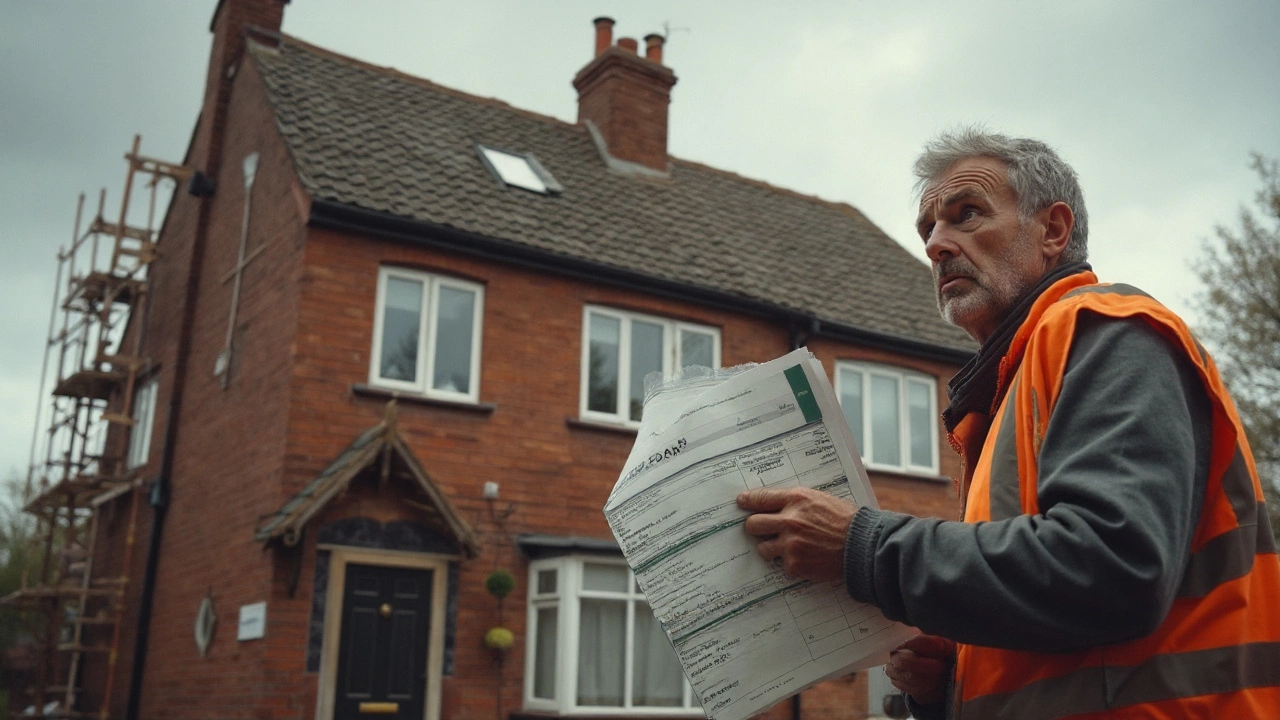Roofing Prices: A Straight‑Forward Guide for Homeowners
Thinking about a new roof or a major repair? The big question is always the cost. In the UK, roofing prices can swing a lot depending on material, size, and the condition of your home. This guide breaks down the numbers, shows what pushes the price up, and gives you simple steps to get a reliable quote without the hassle.
What Drives Roofing Prices?
First up, material choice. Asphalt shingles are the cheapest, usually £30‑£45 per square metre, while slate or tile can hit £90‑£130. Next, roof size matters – a larger roof needs more material, labour, and waste disposal, so expect the price to scale roughly with square footage. Age and condition of the existing roof also play a role; if there’s rotten decking or hidden damage, the crew will need extra time and supplies to fix it.
Labor rates vary by region. In the South East, tradespeople often charge 10‑15% more than in the North East because of higher living costs. Extras such as roof ventilation, insulation upgrades, or adding a gutter system will add a few hundred pounds each. Finally, the complexity of the roof – steep pitches, skylights, or multiple chimneys – means more safety equipment and careful work, which pushes the bill up.
How to Get a Fair Roofing Estimate
Start by measuring your roof. Most roofers will ask for the total square metres, but you can also use online calculators that factor in pitch and overhangs. Once you have that number, request at least three written quotes. Make sure each quote breaks down material cost, labour, waste removal, and any add‑ons. If a quote looks unusually low, ask for details – cheap material or hidden fees usually hide behind low numbers.
Ask the roofer about their warranty. A solid guarantee on both material and workmanship often means they’re confident in their work and not cutting corners. Also, check if they’re registered with a recognised body like CHAS or the FSB; that adds credibility and often means they follow industry standards.
When you compare quotes, look at the cost per square metre rather than the total. This helps you spot outliers when one roof is larger or smaller than the others. Don’t forget to factor in any planning permission or accommodation tax that might apply in your council area.
Budgeting tip: set aside a 10% contingency fund. Even with a detailed quote, unexpected issues – like hidden rot or bad weather – can pop up and add to the bill. Having a small cushion keeps the project stress‑free.
If cash flow is tight, explore financing options. Many roofing firms partner with banks offering low‑interest loans or ‘pay‑over‑time’ plans. Some local councils also run grant schemes for energy‑saving roof upgrades, which can shave a few hundred pounds off the total.
Watch out for hidden costs. Roof tear‑offs, disposal fees, and scaffolding hire are often listed separately. Ask the roofer to include these in the final price so you’re not surprised when the bill arrives.
At the end of the day, the cheapest price isn’t always the best deal. Look for a balance of price, quality, and reputation. A well‑installed roof saves you money on repairs and energy bills for years to come, making it a smart investment for any homeowner.
Is $30,000 Too Much for a Roof? Real Costs, Tips & Red Flags for Homeowners
- Gavin Whitaker
- |
- |
- 0
Is a $30,000 quote for your roof a rip-off or the new normal? Understand costs, get tips, and find out what makes a roofing bill add up fast.
View more